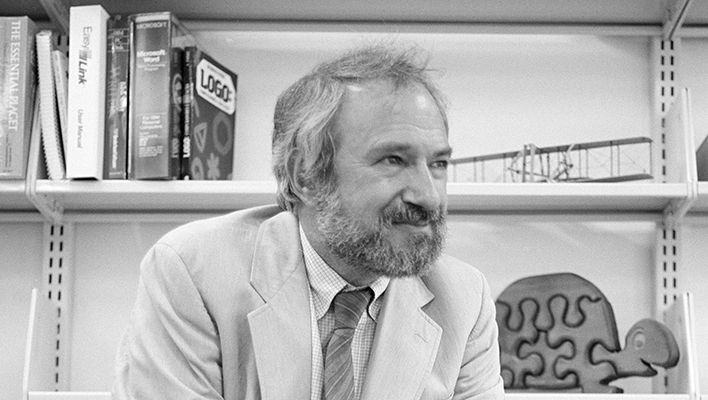If you’ve spent any time training subordinates — or, really, spent any time teaching anyone, at any point in your life — you’ve probably experienced a situation where the person you’re teaching simply can’t understand what you’re trying to show them.
Imagine you've spent the last 30 minutes explaining the concept repeatedly. Imagine you find yourself clarifying the concept by slivers, coming up with new analogies you’d never thought you had in you … but you can’t get them to understand. Imagine that they don’t get it. Imagine that it all washes off, like rain.
This can get really frustrating.
When people tell me that they dislike teaching, they’re usually thinking of an experience like this. Teaching is joyful when you see the person you teach grow into a more awesome version of themselves. The programming construct they struggled with yesterday is second nature today. The uncertainty they had when they first joined your organisation becomes a deep-seated confidence, stemming from competence.
But teaching can also be hard. It’s the moments where you can’t get through to your student that makes you rue the day you started training people. And in the worst of these sessions, a bad thought often sneaks, unbidden, into your head: “what if … what if it’s not me that’s the problem? What if they’re stupid and I’ve hired the wrong person?”
So what do you do when faced with such a situation?
The antidote to this problem is to understand how humans learn.
If you understand how humans learn, you’ll know why perfectly intelligent people find themselves stuck when learning something new. You’ll immediately reach for teaching techniques that help you deal with this problem.
You’ll become a better trainer, and therefore a better manager.

Seymour Papert and Knowledge Construction
Let’s begin with a frank discussion of how you currently imagine that learning occurs. If you’re anything like me, you probably think something along these lines:
A teacher has some knowledge in his or her head. By a process known as ‘teaching’ — which consists of droning on in front of a blackboard, clicking through Powerpoint slides, or conducting demonstrations in front of students — a teacher passes this knowledge on to the student.
In this model of teaching, you’ve probably created an image of the teacher holding a vessel of knowledge. The teacher then pours this knowledge onto her students — who sit in the classroom with open minds, brains cantilevered up to absorb the knowledge like sponges. If the student fails to understand, then, it is because the student has not opened up their mind to the knowledge sprinkling down from above. The student had not made an effort to learn.
This model of learning is what I grew up with, and it’s known in some circles as a theory of ‘knowledge transmission.’
It also happens to be wrong.
Enter Seymour Papert. Papert was an American mathematician, computer scientist, and educator, who came up with the theory of learning known as ‘knowledge construction’.

In Papert’s view, knowledge isn’t transmitted from teacher to student. It is instead recreated in the student’s head — built on top of something that the student already knows.
Here I quote from a fantastic summary of Papert’s work by Andy Ko, who writes:
From this follows Papert’s central critique of modern education: it assumes that the end product of academic discoveries — say, Newton’s F=ma — is something that is meaningfully digestible by human minds. Papert rejects this. In fact, he believed that Newton himself only understood his second law in its mathematical form after a tortured decade with other representations of his ideas. So why would anyone arrive at his same intuition by just encountering it’s propositional form?
Papert further argued that the very scientists and engineers who depend on Newton’s formula also didn’t learn it by absorbing it directly into their minds, but rather, they had to develop their own personal understanding of the formula’s meaning by building upon their prior knowledge, such as their physical experiences with bicycle riding or playing billiards. You may remember sitting in a physics class doing just this, wracking you mind trying to get an intuitive sense of the math, but only having your eureka moment when you found the right non-mathematical representation of the idea that was deeply linked to something you already understood. Only then could you link your prior knowledge to Newton’s formal representation. This is Papert’s “construction” of knowledge in action.
That is not to say that Papert believed the formal notations we find in science are not useful, but that they are not useful for learning. Instead Papert proposed that education must make room for the iterative development and improvement of ideas. In that sense, we all converge toward F=ma, only after beginning with many brittle but useful theories about the relationship between mass and acceleration, much like Newton did on his path to discovering it.
This central bit — the idea that you only understood abstract concepts after you ‘found the right representation of the idea, that was linked to something you already understood’ is key to our discussion today.
In simple terms, humans construct knowledge by building on what they already know. This has huge implications for teaching. It means that teachers cannot teach what students aren’t ready to learn. It also means that the teacher’s job is to guide this construction of knowledge; showing the student the conceptual outcroppings that they currently have, that they may use to leap to understanding … instead of focusing on the best way to transmit it.
All too often we think “if we could just find the right combination of words to explain this new idea, she’d understand.” But this isn’t true. And more importantly, the idea that the right explanation is all that’s needed doesn’t map to our experiences as a learner.
Think back to your student days. When a teacher introduced a new, confusing idea — pointers in a programming language, for instance, an alien concept to your inexperienced mind — you struggled with the idea and banged your head against the wall until you finally ‘got’ it. Now let’s say that you finally understood it because you linked it to the analogy of a burrito. You think: “Ahh, using the explanation of a burrito is a much better way to explain pointers!”
But if you tried to explain pointers to a peer using your New and Improved Burrito Explanation — you might just find that you’ve left your friend more confused than enlightened.
Why does this occur? Papert’s theory offers us an answer: the mental model that was available for you to build on just happened to be this analogy of a burrito. But your friend might not have that particular mental model available to them for construction. And so what was intuitive for you was not intuitive, nor available for them.
Two Solutions
Papert’s theory gives us a firmer foundation to build on. If knowledge is constructed from what the learner currently knows, then the teacher’s job isn’t to transmit knowledge! It is instead to guide the construction of knowledge from what the learner currently knows.
There are many ways to do this, but let us just discuss two.
The first way is to adopt the persona of an anthropologist. As a teacher, your role is to find an outcropping in your student’s current collection of mental models. In so doing you may draw from your student’s surrounding culture, or the environment in which they inhabit — doing as an anthropologist does when they are out in the field. Ask questions to get an idea of what your student understands. Then, build your explanations and teachings around those.
Don't focus on explanations or analogies that feel compelling to you. Focus on the learner, and what they currently hold in their heads.
The second way builds on the techniques Papert developed while at Epistemology and Learning Research Group at MIT. Papert taught students by developing a programming language, Logo, that presented children with navigation problems they had to solve. Papert had them write instructions that would move a turtle on the screen.
Papert’s goal with Logo was to build on a mental model that every child possessed — that is, one’s sense of navigating through the world — in order to teach the intuitions necessary for geometry. A teacher could then use these learnt intuitions by formalising them into equations.
How is this usable to you? Well, you may teach by showing examples to your student, before explaining anything to them. If you find yourself teaching software programming, like me, quickly type out a portion of a program, and then ask your learner: “what do you expect to happen here?” Then, give feedback and repeat with a new example.
Or: type out a program and delete a single line, asking them to rewrite it for you. Correct them as they go along.
The key here is to see that working these examples will cause your learner’s brain to construct this knowledge for themselves. If you view your role as one that facilitates, then you should also see that a facilitator need not always explain.
Papert’s ideas have made me a better teacher, and a better learner. They should help you too, as you learn to train your subordinates. Human minds are truly remarkable learning machines — you merely have to teach them as they were designed to be taught.

